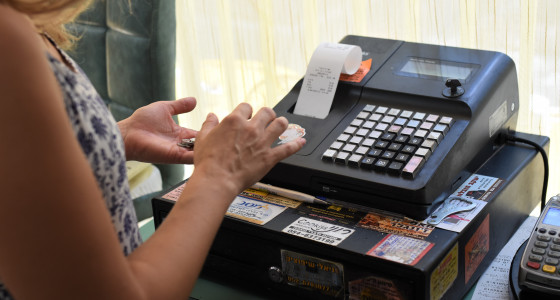
If you’re self-employed, you may be able to reduce your income tax bill by claiming relief on a range of business expenses. Claiming the relief is relatively simple and can be done when submitting your annual Self Assessment tax return.
What kind of expenses can you claim?
Tax relief can be claimed on a range of items and services that contribute to the running costs of your business.
The list is long and specific, but they can broadly be grouped into the following categories:
- Office costs (eg. furniture)
- Travel (eg. fuel and bus fares)
- Clothing (eg. uniforms)
- Staffing (eg. salaries and contractors)
- Things you buy to sell on (eg. stock)
- Financial products (eg. insurance)
- Business premises costs (eg. heating and business rates)
- Marketing (eg. website hosting and advertising)
- Training courses (eg. advanced training)
A full list can be found on the Gov.uk website.
Other business costs like equipment, machinery and vehicles are considered ‘capital allowances’ rather than ‘business expenses’ and need to be claimed a different way (see details).
Are there any exclusions or limitations?
If you’re working from home or use some items for both business and personal use then you’ll need to note the following details.
Working from home
In many cases, a home may be used as an office. In this situation, the government allows expenses to be claimed on the following:
- Heating
- Electricity
- Council Tax
- Mortgage interest or rent
- Internet and telephone use
However, as we’ll see in the next section, you can only claim the portion of those expenses that were used for the purpose of running your business.
Mixed-use expenses
You can only claim expenses on products or services that are necessary components of operating your business. However, some expenses - like mobile phones - can be used for work and leisure.
In cases where an expense has a mixed business and personal use, you can only claim the portion of the expense that was used for your business. For example, if half of your mobile phone bill was spent on business-related calls, then you’d only be allowed to claim relief on that portion of your bill.
Trading allowance
In the UK, the government allows you to earn £1,000 without paying tax or reporting the income to HMRC. This is called the ‘trading allowance’. If you operate within this allowance then you can’t claim tax relief on expenses.
How to track expenses for a small business
Expenses can be claimed against your taxes only if you have a record to prove the claim is legitimate. You’ll also need to keep track of your income so that the proper amount of tax can be calculated.
Keeping track
You can keep track of your income and expenses by either recording the date that you:
- sent an invoice or were billed (traditional accounting)
- received income or paid a bill (cash basis accounting)
Both methods are acceptable, but you shouldn’t mix up the two methods. You can keep these records in a spreadsheet or other accounting software.
Although you won’t need to present your records when submitting your tax return, you’re required to have them so that you can effectively calculate a profit or loss, and present your accounts to HMRC if asked.
Keeping evidence
In the event that HMRC asks you to present your records, you’ll need to show proof that the expenses were legitimate. Accepted methods of evidence include:
- Receipts
- Bank statements or chequebook stubs
- Invoices, till rolls and bank slips
If you use the traditional accounting method, you’ll also need to keep a record of expenses you’ve yet to pay or receive and some additional information.
HMRC requires that you keep these records for at least five years following the submission deadline of the relevant tax year (currently 31st January).
If you lose or can’t find evidence of some expenses then you can estimate their cost if necessary, but you must inform HMRC when submitting your tax return.
How to claim business expenses
The amount of tax you have to pay is calculated by HMRC when you submit your annual tax return, known as Self Assessment.
A Self Assessment can be submitted online via HMRC’s website or by post.
What’s included in a Self Assessment?
Because the Self Assessment is used to calculate the amount of tax due, they’ll ask for the following information for the previous tax year:
- Total turnover (income)
- Total expenses (these will need to be itemised if turnover was above £85,000)
This is in addition to the following personal information that’s unrelated to your business:
- Other income (eg. dividends, rent income, pension)
- Benefits and allowances (eg. universal credit or Jobseeker’s Allowance)
- Pension contributions
- Charitable donations
- Student loan repayments
Self Assessment deadline
Each tax year starts on 6th April and ends on 5th April the following year.
You’ll need to submit your Self Assessment and pay the required taxes by the following dates:
- 31st January the year after (if submitting online)
- 31st October the year after (if submitting by post)
For example, any trading you made between 6th April 2020 and 5th April 2021 would require a Self Assessment submitted by 31st January 2022.
In other words, you’ll have between six and nine months to submit and pay your tax return depending on the submission method you use.
If you miss the deadline, you might have to pay a penalty.
Risk warning:
As always with investments, your capital is at risk. The value of your investment can go down as well as up, and you may get back less than you invest. This information should not be regarded as financial advice.




